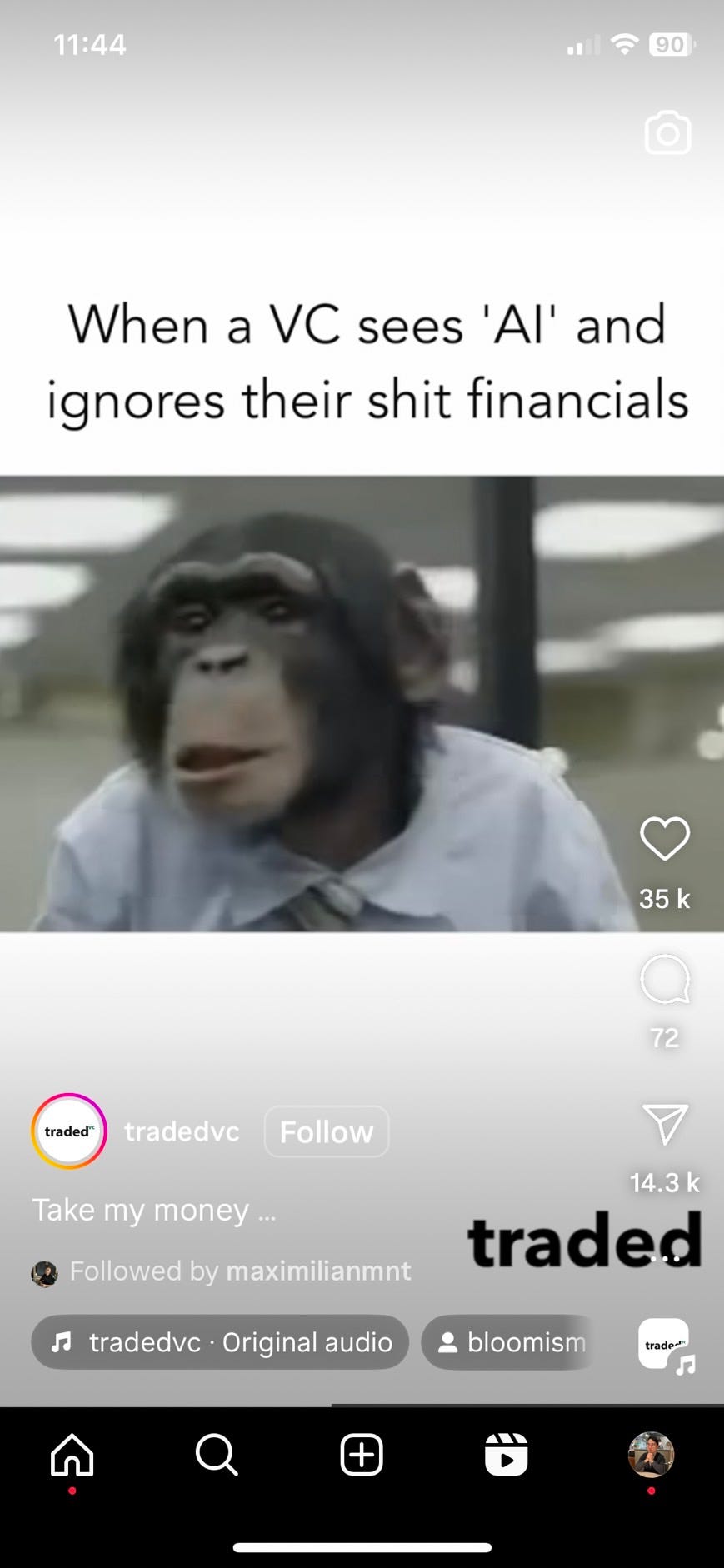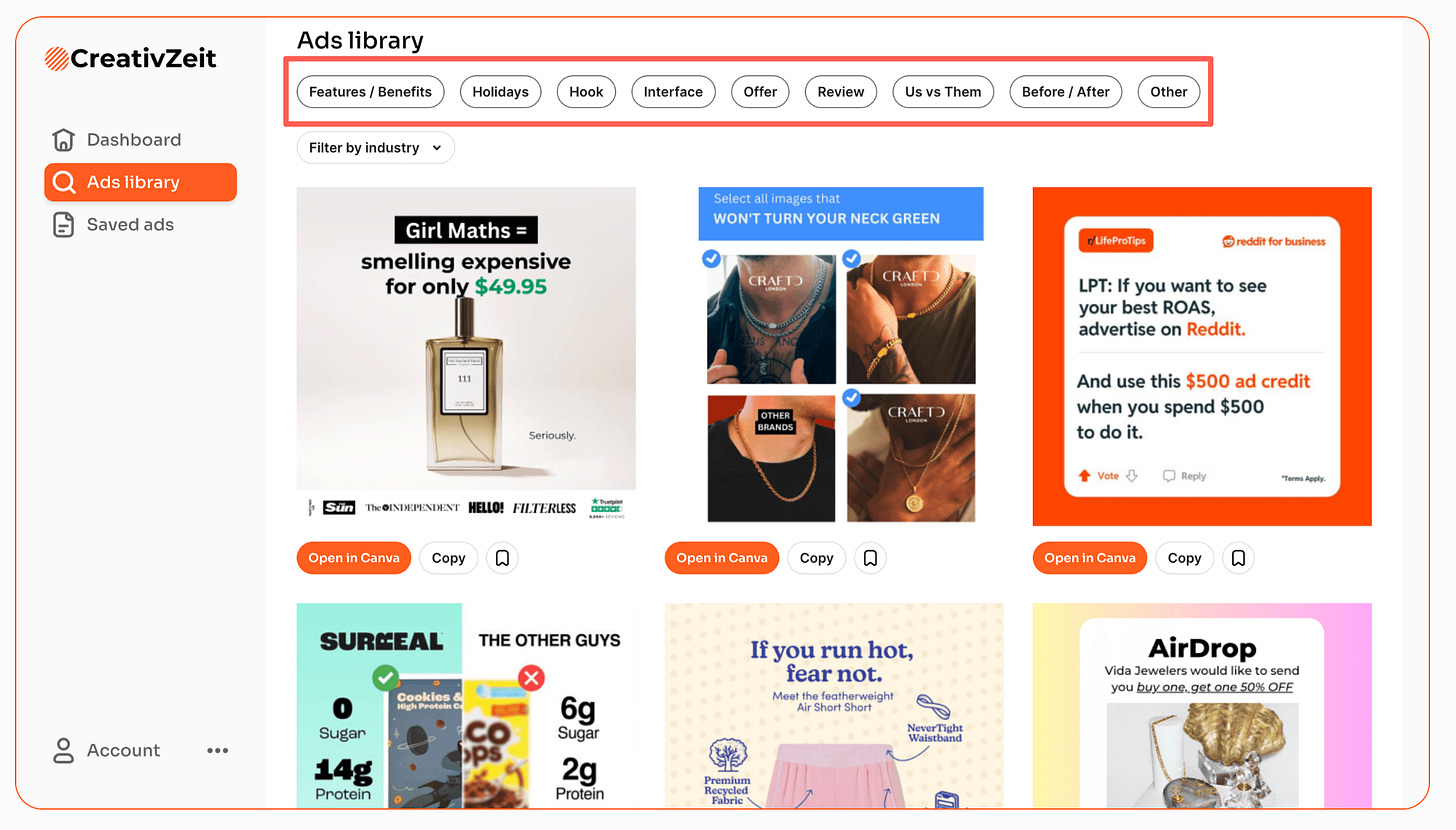How to Make Static Images for Facebook Lead Gen Ads
Hol’ up, aren’t videos better?
A lot of the time, yes. But there are good reasons to use a lot of static image ads:
They’re fast to make. Some of my competitors spend weeks producing one polished video ad. Meanwhile, I can knock out a whole batch of statics in that same time frame.
They’re fast to test. Because it’s easy to make variations, I can test way more angles and audiences in less time.
They’re fast to scale. When I want to hit new markets or demographics, swapping out images and copy is quick. With video, you’d need to hire more creators to shoot new versions. Statics scale faster for me.
❌ Key mistakes
Using random ideas with no system.
This is the biggest one. Many people just throw random ideas at the wall, copying big brands, and hope something sticks. I did this in the beginning, too.
Problem is, if it works (or doesn’t), we have no idea why. Was it the angle? The color? The format? You can’t learn and improve because you changed too many variables at once.
You want to test one clear variable at a time, so you can actually move forward based on real feedback.
Being Cool < Clear
Lead gen is direct response. Clarity beats coolness every time. Yes, you want your ads to look good. But more importantly, they need to be obvious.
Big text.
Few elements.
Purposeful design.
Make sure people can instantly understand the point of the ad. Don’t make them squint.
Meme ads: fun but low quality
Everyone wants to run meme ads because they look fun and you get to be a cool person. But they usually bring in nasty, low-quality leads.

Think about it: when you click on a funny meme ad, do you actually know what the product is, what it does, or whether you’re the right customer? Probably not.
✅ The Process
1. Think think formats, not ads.
Formats are the biggest building block of the ads visual. What I mean here is things like, is the ad a before vs after creative? Or a features/benefits image? Or a huge offer creative? etc.

You can go full freedom mode and come up with something you feel is completely new, but odds are that’s already been tested and is an established format with it’s own performance history. We can’t always see that performance history, but it’s talked about on youtube videos and seen in places like the foreplay library with the longest running ads.
So given that you probably wont’ come up with something new, you might as well pick from a library of formats you know work and start testing from there. Sure, it’s not guaranteed but its a smarter base to test from.
2. Find references to base your designs on.
Now go to sites like SwipeJuice (regular link) (affiliate link) or CreativZeit to pick out your formats. filter by type to pick out some to start testing.
I recommend picking at least 2 formats at a time to develop and test.
Which format to pick? This depends on your research + your product/service industry. But you can see patterns based on longer running ads you see your competitors do in the ads library.
To check your competitor’s longest running ads, go to https://www.facebook.com/ads/library and search your competitor names, then browse through to see which ones have been live longer.
You can’t see their specific performance data but you can guess the longer running ones are probably profitable, otherwise, why would they run them so long unless they’re being a total blockhead.
3. Prepare copy at the same time so you don’t end up with a creative/copy mismatch.
Don’t forget to prepare the copy at the same time. because you’ll need to design the creative with the copy in mind. It’s not always easy to do them separately, though you can try.
I usually create copy in a modular fashion, so I can switch out the headlines, sub-headlines, body copy, dot points etc on the creatives to create multiple iterations with different angles pretty easily.
4. Now create your own versions while keeping in natural, starting with square designs first.
With your references and copy ready, it’s time to create yours. Do it in whatever program you like. I use Canva and copy and paste in references as I go to get a feel for the format.
Tips:
Use natural images over stock, or show the reader directly (so they feel "this is for me").
For fonts and colors, lean toward natural, native-looking choices to avoid ad blindness.
That said, “super ad-like” designs still work too. Don’t overthink it.
Start with square designs, then make 9:16 versions for Reels/Stories after.

For vertical formats, you can include more info, but remember the dead zones at the top and bottom. Avoid placing CTAs or crucial text there.
Note: Can’t you use AI to make these?
Yes. I think you probably can use AI to generate your ads but the process is a little bit different. You’ll need to do the reference step, but think background with elements on top.
I’ve written about my process for this here but I’ll write a longer guide later.
5. Name your ads properly so you can search them up later.
Naming your ad files is actually really important because if you don’t use the correct file naming protocol, it’s going to be a pain in the arse to find your ads.
You should make your own protocol, but this is the one I use. you can skip/remove elements you don’t use:
{thing-being-promoted}_{messaging-angle-number}_{format-letter+number-for-variations-of-this}_{headline-number}_{format}For example:
energy-webinar_M1_A2_H1_reelNow when you go to search your creatives to add to ads in the Meta Ads Manager, you can easily search them by terms like Webinar or M1, etc.
Now you’re ready to run your static ads!
This article is one of my free series of Facebook Lead Ad Tutorials. See the others in the series here:
Questions or feedback? Drop them in the comments below.
Want help with Facebook lead gen ads? Here are 3 ways I can help:
Drop a comment below if you’ve got a question or want help thinking through your offer - I’m happy to share feedback.
Try my DIY course. I made this for my friends who kept asking how to run lead ads. It’s a simple, practical guide to getting up and running fast.
Get me to run your ads for you. If you want done-for-you help, that’s what I do, specifically for sales-led and education businesses.











